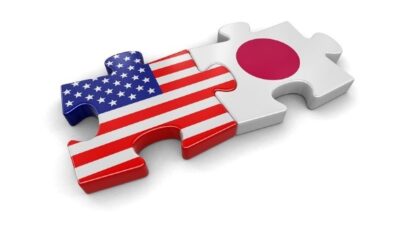On Jan. 1, 2020 the Japan-United States Free Trade Agreement went into effect. The agreement provides duty-free, or reduced duty treatment, for certain Japanese imports into the U.S. and certain U.S. exports to Japan. The implementation details were printed in the Federal Register on Dec. 30, 2019 (84 FR 72187).
The implementation was actually a bit delayed. The tariff reduction provisions took effect on Jan. 14, 2020. Importers of qualifying Japanese imports between Jan. 1 and Jan. 13 had to pay duty and file a Post Summary Correction after the fact to obtain a refund.
Does this mean you can start importing Japanese products into the US free of duty? Nope – you have to read the details. Only certain HTS classifications listed in Annex II of the agreement will potentially qualify for tariff reductions. The list of qualifying HTS classifications includes such things as:
- Live plants
- Melons
- Green tea
- Chocolate
- Ice cream
- Tires
- Mirrors
- Steel fittings and fasteners
- Tools and dies
- Turbines
- Milling and grinding machines
- AC motors
- Televisions
- Bicycles
- Pianos
- Pencils
If the HTS classification of your product is not on the list in Annex II it will not qualify.
The next point is that many of the qualifying products will not immediately become duty-free. The list of HTS classifications in Annex II includes a column titled “staging category.” The letters in that column go from A to K. The HTS classifications designated A will immediately become duty free. Depending on the letter associated with the HTS classification, the duties will be reduced over a period between 2 years and 10 years. Some of the duties will not be eliminated completely but will instead be reduced to a lower duty rate over a period of several years.
There are rules of origin to go with this agreement and products must meet the rules of origin to qualify for duty-free or reduced duty status. To qualify the products must be:
- Wholly obtained or produced in one or both countries. Normally this means grown or mined in one of the countries.
- Wholly produced in one or both countries exclusively from originating materials. This means that all the materials going into the product must be of Japanese and/or US origin.
- Meet the applicable tariff-shift rule.
Annex II of the agreement contains a table setting forth 3 different tariff-shift rules, depending on the HTS classification. The rules require that any non-originating components must undergo a change in classification at the 2-digit, 4-digit or 6-digit level, as designated by the acronyms CC, CTH or CTSH in the column next to the HTS classification in the table.
Is that all? The Federal Register Notice includes procedures for making claims under the agreement.
- An importer may make a claim under the agreement based on the importer’s knowledge or information in the importer’s possession that the article in originating; and
- The importer must make a statement as part of the import documentation that the article is originating; and
- The importer must be prepared to submit to U.S. Customs & Border Protection (CBP) a statement setting forth the basis for its claim that the good is originating
CBP may conduct a verification for the purpose of determining whether an article qualifies under the agreement, such as by requesting additional information supporting the claim. CBP may deny the claim if it determines that the article does not qualify, if it has not received sufficient information, or if the importer fails to meet the entry requirements.
The filing instructions at the CBP website (www.cbp.gov) and CSMS Message #41149692 of Dec. 31, 2019 state that (1) the country of origin must be JP (Japan); (2) the country of export must be JP; and (3) the HTS number on the entry in ACE shall be proceeded by the Special Program Indicator JP. This means, for example that:
- A Japanese product sold and exported from Hong Kong would not qualify
- Failure to place “JP” in front of the HTS classification will disqualify the claim
Finally, the CBP website and the CMS message state that qualifying imports are not exempt from the Merchandise Processing Fee (MPF). They are also not exempt from the Harbor Maintenance Fee (HMF).
Want to claim benefits under the Japan-US Free Trade Agreement? Better do your homework first.



























